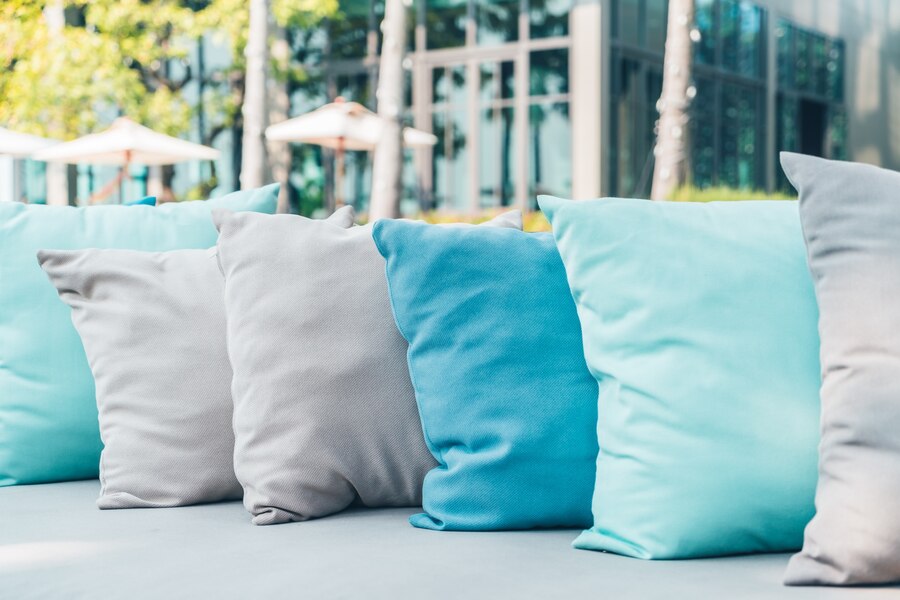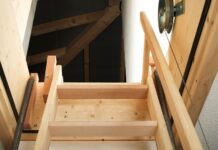Choosing the wrong outdoor cushion can turn a beautiful patio into a maintenance nightmare. Faded fabrics, soggy foam, and mildew smells are common problems. If your cushions don’t survive one season, the issue lies in the materials—not your climate.
Don’t waste money replacing outdoor cushions every year. Learn which materials actually hold up, how to avoid common pitfalls, and what makes one cushion last longer than another.
Key Highlights
- Outdoor cushions need UV resistance, water repellency, and breathable design.
- Polyester cushions fade fast and trap moisture.
- Foam density and structure affect cushion lifespan and comfort.
- Sunbrella fabric is a top choice for outdoor durability and stain resistance.
- Quick-dry foam beats standard fills in wet environments.
- Smart storage and regular care extend cushion lifespan.
Why Most Cushions Fail After One Summer
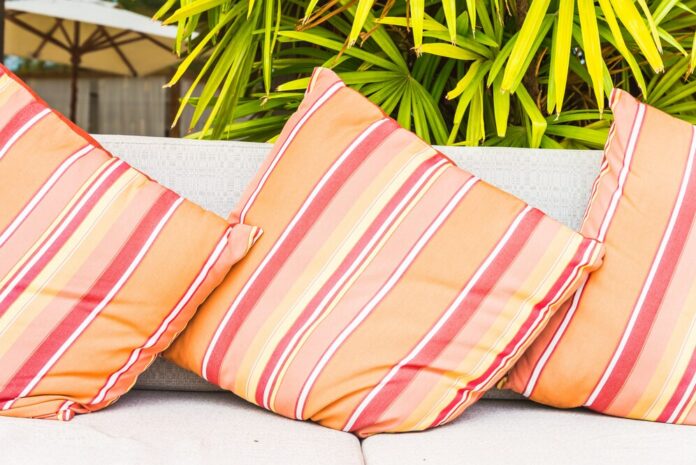
Outdoor environments are harsh. Rain, humidity, direct sun, and constant use quickly break down low-quality materials. Cushions might look great at first but collapse under stress—literally and figuratively.
Common problems include:
- Fabric that fades from UV exposure
- Foam that traps moisture and forms mildew
- Stitching that unravels from wear
- Color bleeding or fabric shrinkage after washing
Manufacturers often cut corners with cheap fabric and poor foam to reduce price. You end up replacing them faster than expected.
What to Look for in Outdoor Cushion Fabric
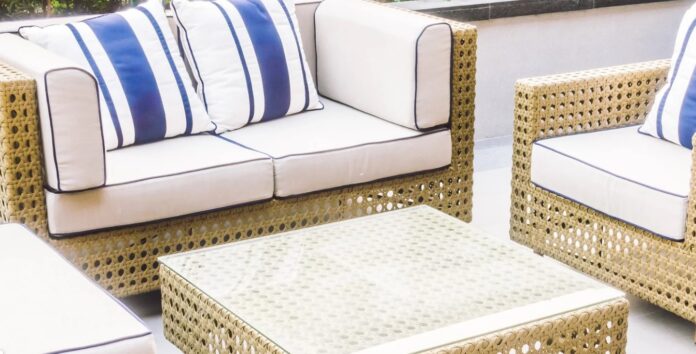
Outdoor cushions need fabric that can handle rain, dirt, and heavy sun. Not all materials are built to endure the elements.
Solution-Dyed Acrylic
This is the gold standard. Color goes through the entire fiber—not just the surface—so fading is minimal. It’s also breathable, water-resistant, and easy to clean. It resists mildew, stains, and UV damage better than anything else.
One of the most trusted examples is sunbrella outdoor cushions from Fabrica Kraft. Select your fabric color, click ‘Instant Quote,’ fill in your details, and relax while they send you a price-match guaranteed quote. These cushions offer long-lasting protection and style without constant maintenance.
Olefin
Olefin cushions offer good durability at a lower price. This synthetic fiber resists water and mildew well but doesn’t have the same long-term UV protection as acrylic. Great for shaded areas or occasional outdoor use.
PVC-Coated Polyester
Often used in low-cost cushions. While it’s water-resistant, it traps heat, doesn’t breathe, and fades easily. It feels sticky in the sun and shows signs of wear quickly.
Cushion Fill: What’s Inside Counts
The internal foam is as important as the fabric. If it traps water or breaks down under pressure, your cushion won’t last.
Quick-Dry Foam
Quick-dry foam has an open-cell structure that lets water flow through instead of collecting inside. It dries fast and resists mold. Best option for humid, wet, or coastal areas.
High-Density Polyurethane Foam
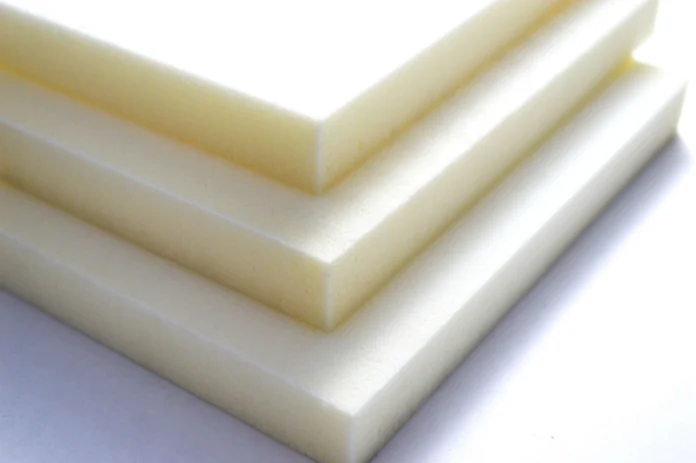
Used in many cushions, it offers good support but retains moisture unless specifically modified. Only acceptable in covered areas.
Polyester Fiberfill
Soft and plush, but not meant for long-term outdoor use. It compresses quickly, absorbs water, and becomes lumpy. Most low-cost cushions use this fill.
UV Resistance: Protecting Color and Strength
UV rays break down both color and fiber strength. Without UV-resistant fabric, cushions lose color and develop tears or frays. Solution-dyed acrylic leads in UV protection. Other fabrics need added treatments but still wear down faster.
How to increase UV protection:
- Keep cushions in shaded areas during peak sunlight hours
- Use furniture covers when not in use
- Choose darker tones with UV-resistant properties
Even the best material will eventually fade, but with the right setup, it takes years—not months.
Mildew and Mold: Hidden Enemies
Outdoor cushions deal with moisture from rain, humidity, and morning dew. If the fabric or foam traps water, mold sets in. Mold ruins cushions from the inside out and creates a health hazard.
Tips to avoid mildew buildup:
- Choose breathable, fast-drying fabrics
- Store cushions vertically to allow airflow
- Avoid stacking wet cushions
- Clean and air-dry immediately after heavy use or exposure
Once mold grows deep inside the foam, it’s almost impossible to remove. Prevention is critical.
Smart Maintenance Extends Life
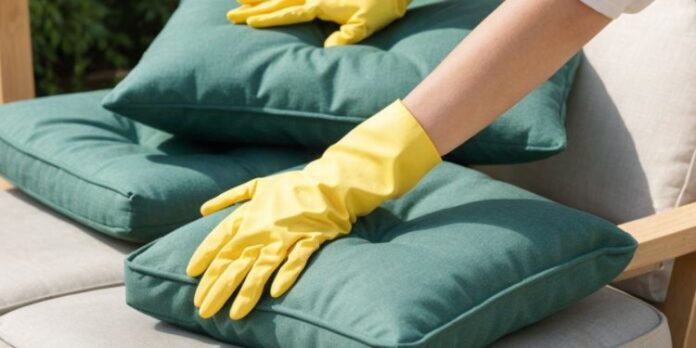
Even the most durable cushions need care. Regular maintenance protects both fabric and foam.
What to do:
- Brush off dirt weekly
- Spot clean spills with mild soap and lukewarm water
- Let cushions fully air-dry before storing
- Bring cushions inside during extreme weather
- Use cushion boxes or ventilated covers
Avoid using bleach, pressure washers, or harsh chemicals. They damage fibers and remove protective coatings.
Making the Right Long-Term Choice
Don’t shop based on looks alone. Focus on materials, structure, and design. Good cushions are an investment. They save you money and frustration in the long run.
Here’s what to prioritize:
- Fabric: Solution-dyed acrylic for best performance
- Foam: Quick-dry or reticulated foam for outdoor use
- Construction: Reinforced seams and zippers for easy removal
- Care: Low-maintenance cleaning and good airflow for drying
If a product avoids specifics and only says “outdoor-friendly” or “weather-resistant,” skip it. Look for technical descriptions. Check reviews. Choose brands that offer real warranty support.
Conclusion
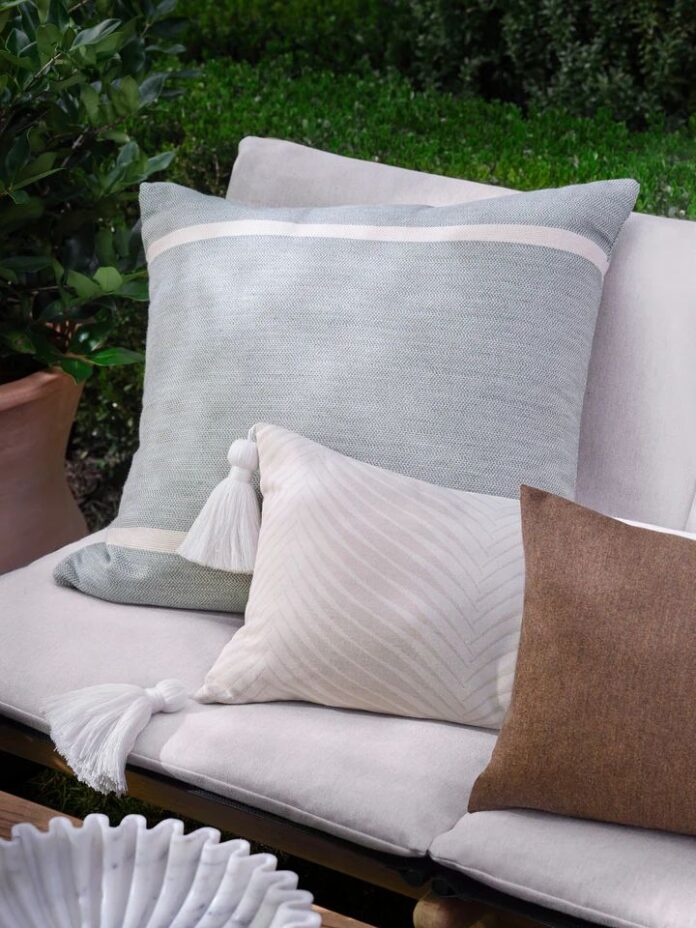
Outdoor cushions shouldn’t turn into an annual purchase. Materials make the difference between a durable investment and a soggy regret. Skip polyester blends, soft fills, and generic covers. Choose solution-dyed acrylics like sunbrella outdoor cushions, pair them with fast-drying foam, and keep them clean and protected.
Well-built cushions handle years of use, sun, and surprise rain. You get lasting comfort, better looks, and fewer replacements. Make smarter material choices now—and avoid summer disappointments later.

